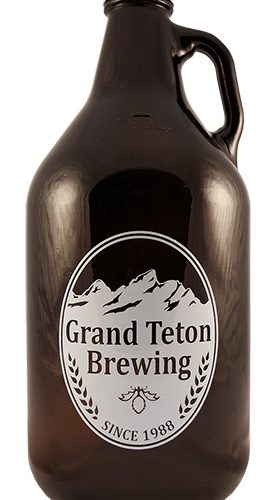Growlers are really popular these days. Many craft beer fans have taken to the practice of regularly scheduled 64-ounce growler refills at their favorite local craft breweries. Some dedicated fans even keep an empty, clean growler in their trunk, just in case they come across a great beer that they can’t get anywhere else.
Ever wonder where the growler got its start after Prohibition? Look no further than the early days of Otto Brothers’ Brewing Company, now known as Grand Teton Brewing Company. The original location of Otto Brothers’ was founded in 1988 in Wilson, Wy. By 1992, the brothers had succeeded in legalizing the brewpub in Wyoming, which meant they could sell beer directly to their customers—enter the need for the perfect to-go container.
“In 1989 their father told them about a pre-Prohibition container called a growler. The New England lidded tin pail was refillable at the local pub or bar by the consumer. Charlie wanted to reintroduce the growler in a modern way and so came up with the 64-ounce glass jug still used by breweries today.”
Almost a decade later, ground was broken on a new brewery on the other side of Teton Pass in Victor, Idaho, and in 2000, they changed their name to Grand Teton Brewing Company.
Read more about the genesis of the modern-day growler, and the early days of Otto Brothers’ and Grand Teton Brewing in their blog post, “In the Beginning…“
CraftBeer.com is fully dedicated to small and independent U.S. breweries. We are published by the Brewers Association, the not-for-profit trade group dedicated to promoting and protecting America’s small and independent craft brewers. Stories and opinions shared on CraftBeer.com do not imply endorsement by or positions taken by the Brewers Association or its members.


Share Post